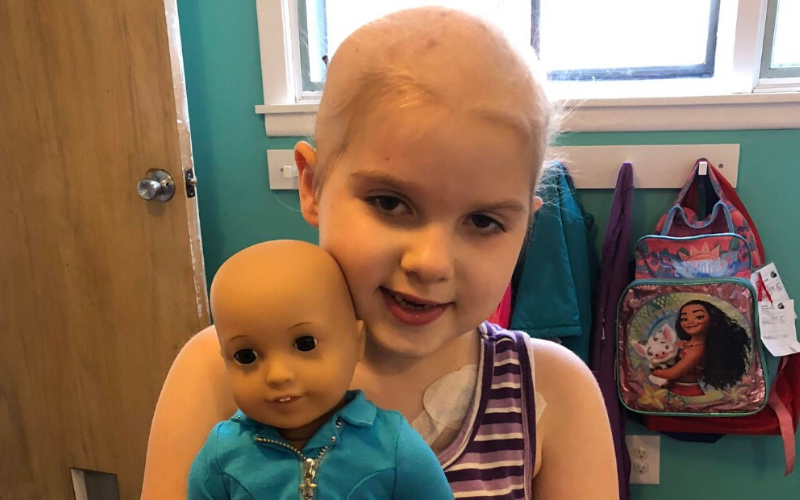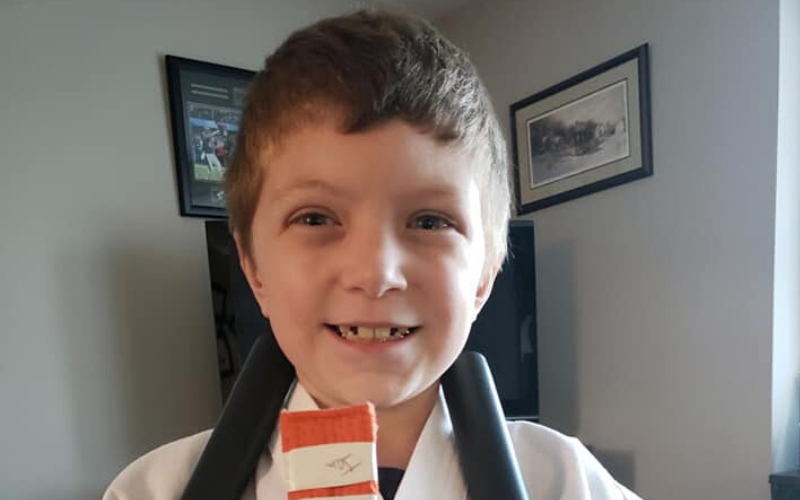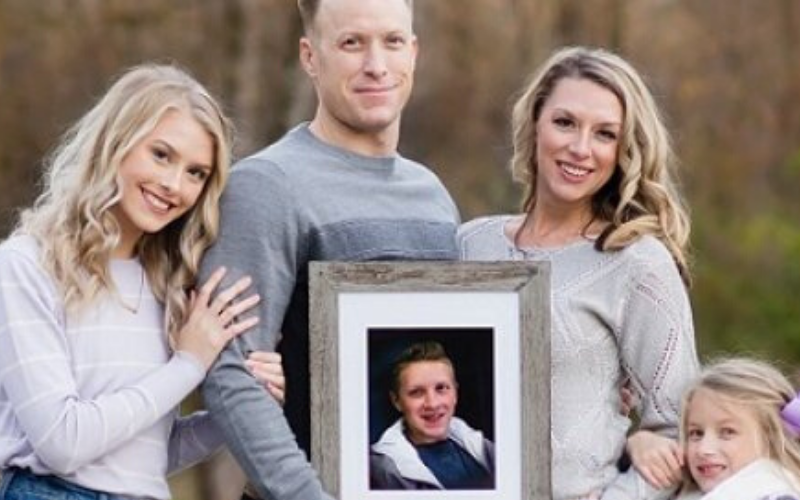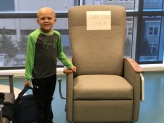By: Trish Adkins
Frankie was just 6 years old when his parents rushed him to the emergency room. Within hours, Frankie was diagnosed with a brain tumor called pilomyxoid astrocytoma.
Pediatric brain tumors account for about a quarter of all childhood cancer diagnoses. Each brain tumor diagnosis is different — there are hundreds of types and subtypes, each requiring a different treatment and with a different prognosis. For kids like Frankie, the day of diagnosis changes everything. Regular days at school turn into days at the clinic. Family vacations are postponed because of hospital stays and precautions to avoid infections. And the normalcy of childhood shifts dramatically, as children are forced to face a very real and very uncertain future.
Meet four stories from pediatric brain tumor heroes, who inspire each of us to face each challenge with bravery and to continue to search for cures for pediatric brain tumors:
1. Sylvia
Sylvia was in Kindergarten when the frequent headaches began. Then she began to vomit almost daily. Her pediatrician recommended an MRI, just to be sure, but really believed the root cause was a food allergy.
Instead the MRI showed a tumor, which was surgically removed two days later.
Pathology revealed that Sylvia’s tumor was medulloblastoma, the most common type of brain tumor in children. Following surgery, Sylvia endured 30 rounds of proton radiation and four rounds of treatment. Twice a week, since her diagnosis two years ago, Sylvia has had physical and occupational therapy. She has MRI scans every 3 months.
Today, Sylvia is 8 years old and cancer-free. When she grows up, Sylvia wants to combine her love of swimming and animals and be a scuba diver.
2. Frankie
Eight-year-old Frankie is a chatty, sensitive kid, who loves animals and recently earned his orange belt in karate. When he grows up, Frankie wants to become a “cancer doctor” and send everyone’s tumors to outer space.
But most of all, Frankie wishes tumors did not exist.
When he was 6 years old, Frankie woke up in the middle of the night screaming in pain. Within 20 minutes, Frankie was unresponsive and rushed to the emergency room.
What followed was a whirlwind — a scan showed Frankie had a brain bleed. He was immediately intubated and flown to a children’s hospital. Additional scans showed that Frankie had a mass in his brain that was bleeding, making Frankie critically ill. Frankie was diagnosed with a rare brain tumor called pilomyxoid astrocytoma. The tumor was not just in his brain, but also in four spots in his spine. Frankie endured a 12-month chemotherapy protocol. Shortly after completing it, scans began to show the tumor in his brain growing again.
His parents made the decision to try a targeted pill treatment. Then, Frankie suffered another brain bleed as a result of the tumor. Today, during the pandemic, Frankie remains hospitalized fighting to recover from this setback and get back home to his sister and his parents.
3. Ryan
Life changed in an instant for the Cartafalsa family when their young son Ryan, who had been experiencing balance issues, had a CT scan that revealed an abnormality. Ryan was just 22 months old.
That abnormality turned out to be anaplastic ependymoma, a type of brain and spinal tumor. Ryan endured surgery, two rounds of chemotherapy and 33 proton radiation treatments.
Today, Ryan is 11 years old and cancer-free. He tends to make everyone laugh, including his oncologist.
“The strength Ryan showed during his cancer treatment is an inspiration to all of us,” said his mom Trish.
4. Austin
Austin was 12 years old when he wanted to stop playing baseball. His family was baffled, but then noticed how his gait had shifted and it seemed he had trouble walking. Initial visits to the doctor did not bring answers. Then a visit to a neurologist led to an MRI and an answer: Austin had a brain stem lesion. At first the pathology showed it was a grade 1 benign tumor.
Austin had surgery, chemotherapy and worked to recover. He began playing golf for high school and returning to his normal life.
About eight months later the symptoms popped up again — stumbling and numbness in left side extremities. The tumor had stopped shrinking and began growing. A second test of Austin's first biopsy indicated the tumor carried a mutation which led to the diagnosis of diffuse intrinsic pontine glioma (DIPG).
Austin had been accepted to participate in an oral drug trial, but his inability to swallow and diminishing health led to a second craniotomy. The surgery was able to remove parts of the tumor but Austin’s ability to breath on his own never returned. Sadly, Austin passed away on March 16, 2018 at the age of 15.
You can make a difference for kids battling brain tumors. Learn more about the cutting-edge brain tumor research funded by Alex’s Lemonade Stand Foundation.





